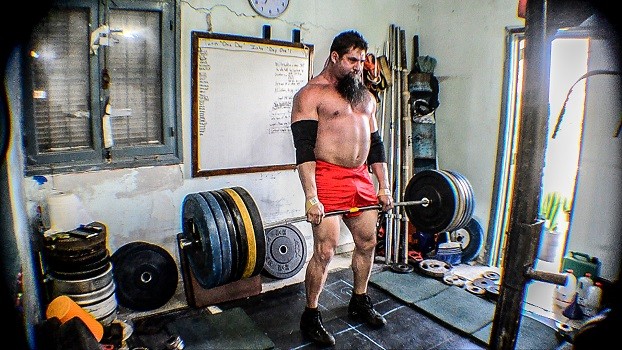
The deadlift is an intense multi-joint movement in which there is a lot of technique required in order to correctly and safely execute the lift. This goes across the board, no matter what style of deadlift you are performing, your grip, or hand placement. The fundamental technique will be the same.
One critical technical aspect of the deadlift is engaging your latissimus dorsi in such a way that keeps them as tight as possible. By doing this you will ensure that your chest is up and your back flat. One of the biggest sins is letting your back curve at the thoracic region and it is very obvious to spot; let alone it looks quite uncomfortable.
On July 2nd, in his training log, Joe Schillero wrote:
One of the biggest technical errors lifters make on the deadlift is not getting their lats locked in tight enough before starting the pull. If your lats aren't tight and in position, you will likely get pushed forward on your toes, have your back round over, or end up jerking the bar off the floor.
All of these issues can result in being thrown out of position and make lockout close to impossible. When you get rounded forward you put yourself in a position that you can't overcome when deadlifting heavy. Think about it like being on the light end of a teeter totter.
Coaching cues for keeping lats tight:
1) Break the Bar
Joe learned this technique from Marshall Johnson. Essentially you are incorporating the same coaching cue as in the bench press: reach down, have a firm grip, and break the bar apart.
2) Protect Your Armpits
This technique was learned from Vincent Dizenzo during this past Powerlifting Experience II. This one is exactly what it sounds like, covering your armpits with your upper arms as you grab the bar. By engaging your lats in this way you are putting your shoulder blades in an optimal position.
3) Put Your Shoulder Blades in Your Back Pocket
Director of Education at elitefts™, Mark Watts, taught this to Joe awhile ago. This concept is a great coaching cue for keeping your chest up and can be incorporated in numerous exercises. This puts your lats in an ideal position for keeping tight throughout the pull; the action should take place as you are taking the slack out of the bar.








